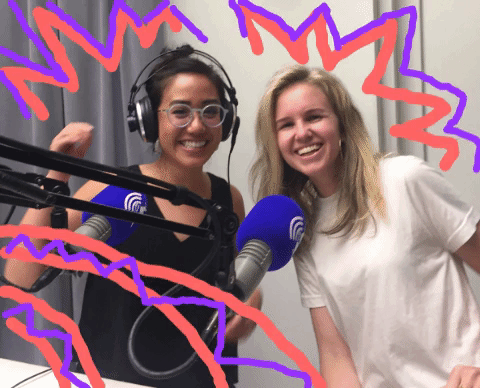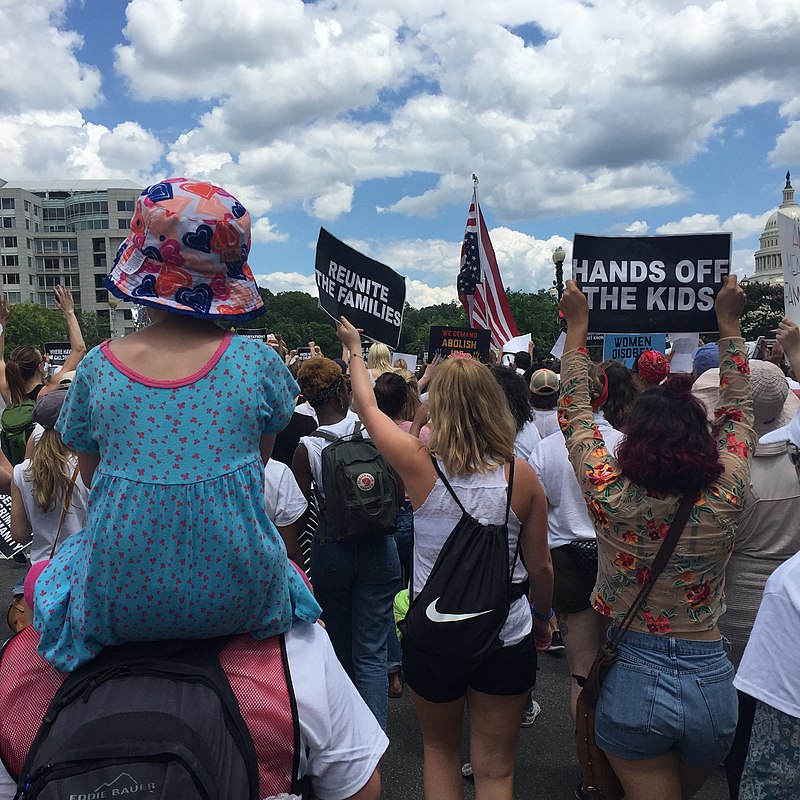My name is Anna Goren, and I am involved in an RG praxis group in Seattle, WA. I have always been interested in philanthropy —growing up in a practicing Jewish household, we were always encouraged to give by the principle of tzedakah. My community is very generous, and also very wealthy. I witnessed from a young age how philanthropy works both in the traditional sense and in the subtler, informal ways that communities care for themselves and others, that are not reflected on a plaque or pledge card. As a recipient of both of these types (and the privileges that come along with it) I wanted to write an article that tells the story of the less visible forms of giving, and the different type of power associated with it.
The following is a version of a post from The Seattle Globalist, posted March 31, 2014.

It is a 1.5 trillion dollar industry, using 10% of the national workforce, made up of 1.1 million organizations.
Even since the economic downturn, international giving was still at $19.1 billion in 2012.
Washington, with the Gates’s, Nordstroms, Paul Allen, and others so deeply entrenched in the private wealth of this region (along with our street signs and wall plaques), ranks highly on the national scale of giving, 15th out of 51 states, according to a 2012 study by the Chronicle of Philanthropy.
In that number, collected from IRS data that likely does not account for smaller, unclaimed donations, are a high number of young people under 30 and white people, at 81.4% of donors in Washington.
‘Big philanthropy’[AG1] , with its silent auctions and six-figure checks, has typically mirrored a real-life class divide that pervades the country, with many immigrants and people of color on the receiving end of wealthy white giving. That’s not to knock their impact — we rely on big private money to step up where governments have stepped back, and rich people wanting to give away money, in theory, doesn’t have to be a bad thing. But the system in place risks excluding the very people affected by inequality from the decision-making around their lives.
Some people are aiming to change that.
Immigrant philanthropy is currently thriving, though that’s no surprise – it’s embedded in countless cultures, no family foundation needed.
“Generosity is a part of who we are,” says Uma Roa, the former Development Director for API Chaya, who sits on the Board of the Northwest Immigrant Rights Project.
“The conversation is never about convincing someone to give, it’s just a matter of how.”
While census data would indicate that the majority of philanthropic donors are white and upper-middle class, these numbers don’t catch variety of forms of giving among different communities who are used to taking care of each other in the form of remittances, resource-sharing, or donations small enough to be unclaimed on a tax return, but large in relation to an overall amount of assets.
Statistics show that lower income people consistently give larger percentages of their incomes than those with considerably larger amounts of money.
That how is something that many innovative philanthropy organizations in my native Seattle have brought into question, capitalizing on the strengths of flourishing immigrant communities here, from the more settled, (many of whom have found success in the tech industry), to more recent arrivals fleeing persecution, struggling to make ends meet.
Noelle Ito, Senior Director of Community Philanthropy for the national organization Asian American/Pacific Islanders in Philanthropy (AAPIP), says that organizations like theirs grew from recognizing the capacity of immigrant communities, and the need to fill gaps.
According to a study commissioned by AAPIP in 2007, Between 1990 and 2010, the largest foundations in the US allocated only .3-.4% of their amassed donations to the Asian American and Pacific Islander immigrant causes.
The community, it seems, knows best, and community giving models like giving circles, are one way that immigrants and others less represented in ‘big philanthropy’ have organized to make an impact.
So, what’s a giving circle?
According to the AAPIP website, a giving circle is “a group of volunteers raising, pooling, and granting money together.” They are able to get specific, and have a direct impact, organizing themselves around a particular issue or demographic. Examples include Social Justice Fund’s ‘Next Generation’ giving project for young people, or Jolkona’s project raising funds for life-changing surgeries in Bolivia.
In traditional philanthropy, efforts focus on stewarding wealthy donors to amass the most money, under the oversight of board members, often required to have donated large sums themselves. At worst, as documented by Ken Stern in his latest book “With Charity For All: Why Charities are Failing and a Better Way to Give”, some big charities seem to be set up to keep themselves in business, rather than solve the problem at hand.
Giving circles stray from this model. Representatives from the communities themselves are highly represented, and the process of allocating money is collaborative. Giving circles appeal to people without huge amounts of money – Jolkona uses a subscription system that starts at $10 per month, and it’s as easy as paying a bill online. Through the giving process, participants educate themselves on the issues through social media outlets, or actually getting together to discuss it, most likely sitting around in a circle.
To be clear, the goal isn’t to get rid of big charity. It’s about being relevant, and being inclusive.
“It’s a two-pronged approach,” says Ito.
Though the principles remain the same, projects like these vary by organization. Social Justice Fund NW, a local progressive philanthropy organization, just began its 14th cycle of giving projects. Program Director Mijo Lee has co-facilitated eleven of them. Inspired by a Resource Generation’s work with young people who have wealth, the ‘Next Generation’ giving project focuses on donors under 40.
“Nobody here [at SJF] really has a background in philanthropy,” laughs Lee, who has her law degree. “It’s a really strong point that we have an understanding of organizing.”
The two, she asserts, are inextricably linked. SJF folds intensive workshops on race and class into their giving projects, making space for people from different racial, class, religious, and ethnic backgrounds who may not encounter each other in regular life, a chance to understand one another’s relationships to money, and therefore, giving.
The giving projects, which are time-intensive, are organized around issues like gender justice or immigrant rights. Last year, participants were nearly half people of color, a much higher figure than the 19.6% recorded as giving charity in Washington, on the taxpayer books. The projects have the intention of bringing together those who might not typically write big checks to non-profits or attend benefits to the table with some people who would.
“We want to create a philanthropy that really is accessible and meaningful for everyone — not just lip service.”
The process of giving as a community, according to Lee, allows people to leverage different connections and have important conversations about where the money goes. After discussing hot button issues like race and class as a group, participants are trained on fundraising and are asked to raise money from their family and friends, an amount that feels meaningful to them. From there, they pool the money together, invite organizations doing the work they want to see as a group — most of them small, grassroots, and less likely to be funded by massive foundations, to apply. Participants are dedicated to the process — they go on site visits, comb over grant applications, and eventually dole out tens of thousands of dollars.
Sound more involved than writing a tax-deductible check or buying a raffle ticket at an action? That’s because it is.
“If you feel comfortable with it, you’re doing it wrong,” says Lee, who says that regardless of their background, people’s biggest challenge is a fear of asking for money.
Inevitable tensions aside, what might be a drop in a bucket for one person, evidently can make a meaningful impact on a grassroots organization. These giving strategies draw on a long history of global cultures of resource-sharing, like caring for children or offering food in times of hardship.
The work is also in line with more recent trends in America as the face of philanthropy changes, both literally and figuratively. Values-driven, recession-bred millennials like myself are replacing boomers, bringing with us our emphasis on experiences and impact. First and second generation immigrants and people of color have increasing access to class mobility through startup-culture and the tech industry, both of which thrive in Seattle.
People like Paulina Bustos Arellano, who moved to Seattle on an H1-B Visa for a job at Microsoft, found the Social Justice Fund’s giving project as a place to live out her experience as a Mexican in America with class privilege. “There aren’t a lot of visible role models [for philanthropy] other than in white culture,” she says “and that can be a barrier”.
The results of inclusion makes sense: as those who are most affected by oppressions like racism, sexism, and classism, (i.e. people of color), have more access to money and class privilege, the values of philanthropy are informed by this experience, and we all benefit. Social change philanthropy reflects the actual world we want to see, rather than embodying the same structures in society that give certain people more power than others, masked in charity.
“People talk about a giving culture — when you have one that’s maybe different than the one in the U.S., you have to approach it in a different way, says Arellano.
It is a slow road, starting with a few organizations who have provided structures and outlets for these shifting trends. But in the end, changing the shape of philanthropy could speak volumes on the visibility and decision-making power of traditionally marginalized groups.
Organizations like Jolkona, translating to ‘a drop of water’ in Bengali, use a variety of giving platforms to engage the wide spectrum of immigrant groups in Seattle in a way that is relevant, culturally and economically.
A recently launched project, Lift Bangla, is a pilot project focusing immigrant group giving in the diaspora, directly to a project in the country of origin (in this case, Bangladesh.) The project, launched in partnership with the U.S. Department of State, recognizes the natural proclivity for immigrant groups to give money back home.
“When people say immigrant, you think of people facing severe barriers,” says Nancy Xu, Design and Technology Director at Jolkona.
“But there are very successful immigrants here, doctors and lawyers — it’s a very different group.”
Xu asserts that the different models for giving that Jolkona offers are a response to different experiences of immigrant life in America. Older people have stronger ties to home countries, while younger second and third generation immigrants are more caused-focused, setting their sights on things like women’s issues or the environment, both locally and internationally.
“You start in survivor mode,” said Xu, whose family emigrated from China. She went from sharing a room with her family and shopping at the dollar store to earning herself a job at Microsoft, while her parents eventually secured good jobs in their fields. As the tech industry booms in cities like Seattle, wealth looks younger and younger, and also looks like Xu.
“We are trying to move the needle on something really big,” she says.
That something might be adding the immigrant voice to a new culture of giving.



